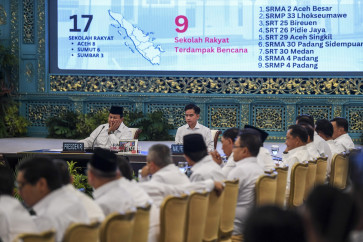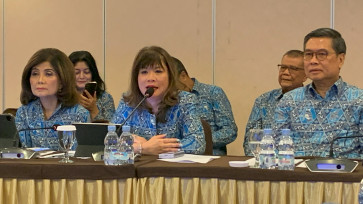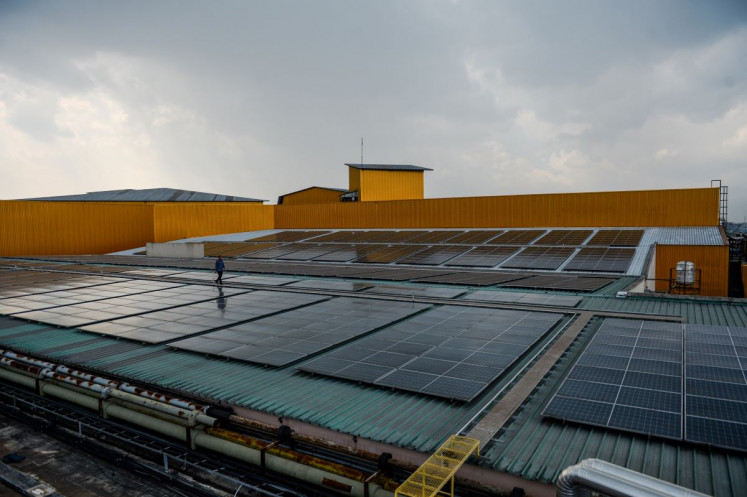Popular Reads
Top Results
Can't find what you're looking for?
View all search resultsPopular Reads
Top Results
Can't find what you're looking for?
View all search resultsA natural born chef’s penchant for French food with Asian twists
Keisuke Matsushima was a boy of 10 in the city of Fukuoka when he dreamed of having his own French restaurant
Change text size
Gift Premium Articles
to Anyone
K
eisuke Matsushima was a boy of 10 in the city of Fukuoka when he dreamed of having his own French restaurant.
“At that moment, I wanted to leave Japan for France. It’s simply because Japan is a little nation, so I wanted to see other parts of the world,” the chef said at Hotel Mulia Senayan in South Jakarta in late October.
He realized that dream 10 years later when he moved to the European nation, after learning the basics of French cuisine at the Tsuji Culinary Institute in Tokyo. He became the assistant to many leading French chefs.
“He taught me to be passionate as a chef, and that to be successful we have to work hard,” he said of his greatest teacher, Bocuse d’Or winner Regis Marcon.
“He always concentrates on many things.”
He opened his own restaurant, Kei’s Passion, in Nice on his 25th birthday. The restaurant closed down after a year, but he has cooked up success with his eponymous larger establishment Keisuke Matsushima — a seven-time Michelin star winner — and bistro Bistrot de L’école’ in the coastal city (he says he was drawn to it by its sunny climate and fresh produce and seafood).
He also has a restaurant in Tokyo named Restaurant-I, which this year received its second consecutive Michelin star.
He credits his interest in French gastronomy to his family’s farming background. Besides its global recognition as a country for arts, fashion, food and love, France is also an agricultural country.
“It’s similar to my family. Starting from my grandfather, all members of my family are farmers. For that reason, we relate strongly to nature. I respect nature a lot.”
The world is already at his feet but Matsushima modestly refuses to be called a grand chef.
“I’m just a translator of nature. I translate it and make dishes from it. That’s all. I’m also modest. I don’t really desire saying those are my dishes. The dishes are decided in relationship with nature,” he said, adding it was a “very Asian” philosophy.
He says each ingredient of a dish must be respected; he always uses seafood because of its availability on the coast.
“My colleagues often ask me to give Japanese touches to my dishes. Apart from my love of French gastronomy, I’m happy to put some Japanese influence in because people will see that Mediterranean products can be used differently.”
These influences were clear in his exclusive set menus at the five-star hotel. His roasted royal Mediterranean shrimps with minestrone soup and autumn vegetable ravioli used a clear broth instead of a creamy pasta sauce.
And for his signature dish — pan-seared prime Black Angus beef “Mille-feuilles” with Zucchini flower tempura — the beef is layered with wasabi.
“My dishes are not fusions. I still respect all the French traditions, all its identities, but I just want to modernize and renovate them.”
The recipient of the Chevalier des Arts et des Lettres in 2010 knows the fine art of both French and Japanese cuisine. They are similar in their artistic and detailed presentation, but still very different, he says.
For French chefs, cooking techniques are what matter, while for their Japanese counterparts the precise cutting of raw fish and vegetables is paramount.
“In Japan, good products come from the sea and mountains. People always eat raw food. Therefore, size and appearance are very important. In Indonesia and in other countries, including France, it’s not very easy to eat raw food so we cook the ingredients. Therefore, cooking techniques are necessary to be mastered,” he said.










